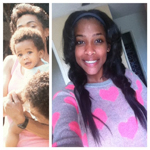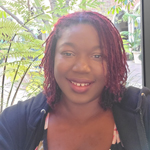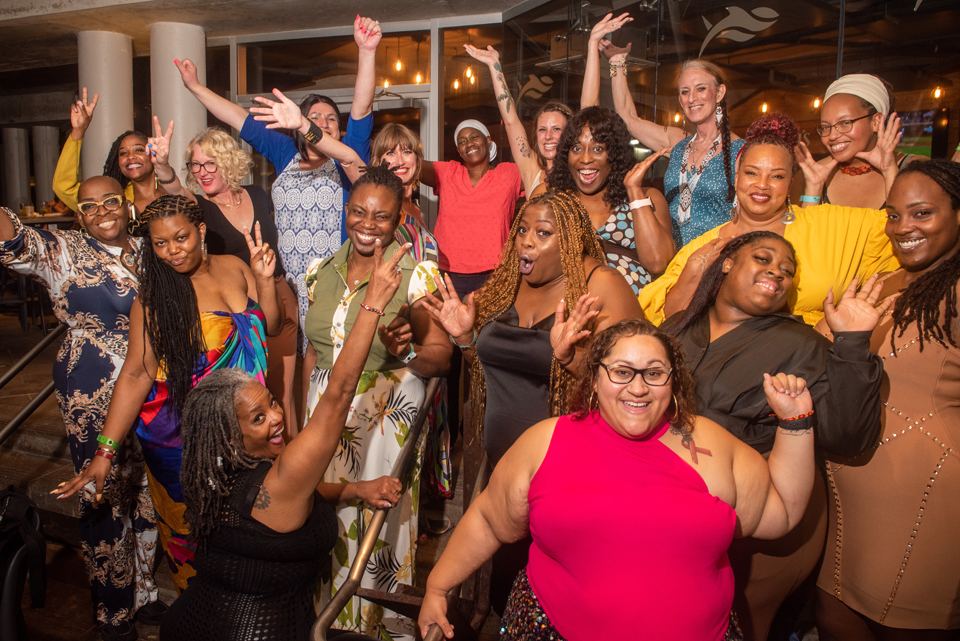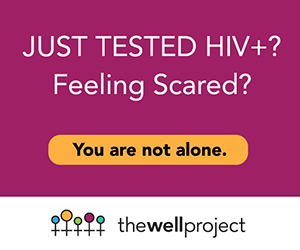
Lea esta hoja informativa en español
Table of Contents
- Female Lifetime Survivors of HIV
- Some Language to Know
- The Dandelions Movement
- Individual and Social Challenges
- Women Surviving and Thriving Over a Lifetime with HIV
Female Lifetime Survivors of HIV
There are many adults living with HIV today who acquired HIV at birth or as young children. They are lifetime survivors of HIV (also known as Dandelions), meaning they have lived with HIV for their entire lives. They have issues that are similar to older-adult long-term HIV survivors who have also lived with HIV since its earliest days, as well as their own unique concerns.
Connection with others who share their unique experience and advocacy around some effort larger than their individual lives are vitally important for women lifetime survivors of HIV.
Rates of HIV transmission to babies during pregnancy, birth, breastfeeding, or through medical interventions have dropped significantly in recent decades. This success is due to progress in research, treatment, and testing for women; screening of donated blood products and organs; and the continued expansion of access to these advances worldwide. Still, at the end of 2021, there were nearly 13,000 people in the US living with early acquired HIV; about 10 percent of them were less than 13 years old. (That number globally is more difficult to gauge.)
There is very little information available about the lives and experiences of lifetime survivors, especially women. These young people often get "lost in the mix" of HIV statistics, rather than being seen as a group and a community unto themselves.
Despite numerous obstacles, many of these young long-term survivors are sustaining full lives; choosing to build families; contributing to communities; in some cases, making history; and sharing profound wisdom and vital information based on their experiences.
View our companion fact sheet, Medical Concerns for Women Lifetime Survivors of HIV, for more information

"[T]here are plenty of long-term survivors that can relate because we have the same chronic illness, but it's nothing compared to sharing the life experience of being born HIV-positive with others that were also born HIV-positive. Managing HIV as children and into adulthood is an experience and a bond that is difficult to describe." – HIVictorious from "My First USCHA Experience," on A Girl Like Me
Some Language to Know
Some terms come from the community itself, while others are more clinical – and some may be considered stigmatizing.
Below are definitions for several terms with similar meanings that you may hear used to describe HIV transmission at birth or early in life, and those who acquired HIV this way. Some terms come from the community itself, while others are more clinical – and some may be considered stigmatizing. An organized group of adults living with early acquired HIV have stated that “lifetime survivors of HIV” or “Dandelions” are the terms to which they respond (more on this development below).
- Dandelions: A term used by many people who acquired HIV at birth or early in life to describe themselves. Coined in honor of the late Mary Bowman, whose poem "Dandelions" details being born with HIV and losing a parent to AIDS complications. See lifetime survivors of HIV.
- Early acquired HIV: Acquiring HIV during the first ten years of life.
- Lifetime survivors of HIV: Adults who have been living with HIV since birth or early in life.
- Long-term HIV survivors: People who have been living with HIV for many years – typically more than 10 years. "Longest-term survivors" are those who have lived with HIV since the epidemic's early days, before effective treatment was available – a group that includes people who acquired HIV at birth or early in childhood who are now adults. Please see our fact sheet on long-term survivors of HIV for more information.
- Mother-to-child transmission of HIV (MTCT): Consider avoiding this term, though it is still widely used by the World Health Organization (WHO) and other global health entities. Describes transmission to a baby during pregnancy, labor, delivery or breastfeeding. Often used in reference to preventing these transmissions, though the term promotes stigma against pregnant and parenting people who are living with HIV. See vertical HIV transmission.
- Perinatal HIV transmission: Clinical term for transmission to a baby during the perinatal (immediately before and after birth) period
- Perinatal infection, perinatally infected: Avoid these terms. Refers to HIV acquired in the perinatal period, but the word "infection" or "infected" applied to a person is stigmatizing. See perinatal acquisition.
- Perinatal acquisition, perinatally acquired: Also refers to becoming HIV-positive immediately before or after birth. Preferred to the term above but may be overly formal or complicated for some settings.
- Vertical HIV acquisition: Becoming HIV-positive via transmission by a parent.
- Vertical HIV transmission: Transmission from a parent to their offspring. Also a clinical term; in the past, some advocates living with vertically acquired HIV have reclaimed this term and refer to themselves and others who share this experience as "verticals."
An important guideline when talking to or about any person living with HIV is to use people-first language (phrasing that puts the person before their diagnosis or label – as in "woman living with HIV" rather than "HIV-positive woman"). To learn more about language and HIV, please see our fact sheet Why Language Matters: Facing HIV Stigma in Our Own Words.
Click above to view or download this fact sheet as a PDF slide presentation
The Dandelions Movement
In 2023, the largest organized gathering of lifetime survivors to date took place in Washington, DC. During those meetings, this diverse group of individuals led by women of color agreed on the importance of organizing into a wider network called the Dandelions Movement. The name "Dandelions" comes from the iconic spoken-word piece of the same name by poet and activist Mary Bowman, also a lifetime survivor, who passed away in 2019 at age 30. The group outlined the terms by which their community must be called: lifetime survivors, or Dandelions. (see section above on Some Language to Know.) They also came up with a list of crucial demands – such as respect, inclusion, and to be reflected in decision-making tables – to address the lack of research, programming, and representation regarding this community.
"When we say to call us LIFETIME SURVIVORS or DANDELIONS, we mean it!!! We came up with that. ... So from now on, don't identify me as a person born with HIV, don't call me a perinatal and please don't call me no damn vertical. Put some respect on my name and call me a Lifetime Survivor or a Dandelion." – Kim Canady, from "I'm a Lifetime Survivor — Put Some Respect on My Name" on A Girl Like Me
Lifetime survivors wishing to connect with this community can visit the Dandelions Movement website and click on "Our Community" or "Join Our Community" on the drop-down menu.
Lifetime Survivors of HIV: On this very special episode of A Girl Like Me LIVE, host Ciarra "Ci Ci" Covin was joined by three dynamic women: The Well Project community advisory board member Kim Canady and Dandelions, Inc., co-executive directors Antoinette Jones and Derinthia Williams.
View other episodes in the A Girl Like Me LIVE series
Individual and Social Challenges
- Disclosure
- Limited Support Systems
- Mental Health
- Substance Use and Sexual Risk
- Violence
- Intersectional Experiences of Oppression
As often noted in this fact sheet, many of the concerns below affect most people living with HIV but may be made even more difficult by the challenges of managing young adulthood with a chronic health condition that may affect not just them, but members of their family as well.
Disclosure

"Disclosure has been one of the scariest things to navigate in my experience. You don't know how people will react–what they'll say, or if they'll freak out." – Porchia Dees, from "Attention Health Care Providers: Insight into Why Young People May Be Not Consistently Engaging in HIV Medical Care" on A Girl Like Me
Telling others (disclosure) can be one of the hardest decisions that young people living with HIV make. Women who acquired HIV early in life may be afraid to tell their friends and partners that they are living with HIV, for fear of being rejected or treated badly due to HIV stigma. They may also have negative associations with finding out their own HIV status.
Finding out HIV status
Some young women may not be told that they are living with HIV by parents or guardians until they are older – or ever. Advocate Lolisa Gibson-Hunte acquired HIV as an infant but found out as a teenager when she got tested on her own. By the time they are adolescents, young people may already have formed negative opinions about people living with HIV based on HIV stigma in the community and society around them, before finding out their own HIV status.
There is a lot more to learn about how to support young lifetime survivors in making decisions that help them lead their own healthiest possible lives, including safe and fulfilling sexual experiences.
Knowing their own HIV status is an important first step for a young person to begin to manage their own HIV care, and some studies among adolescents have shown that being told their HIV status is associated with staying connected to care. For more information, please see our companion fact sheet on medical concerns for lifetime survivors.
Decisions about when a child ought to be told their HIV status may have to do with concerns around family privacy and stigma, caregivers' beliefs about what that disclosure would do to the child's mental health, or caregivers' own internalized HIV stigma. Disclosure to young people living with HIV has also been shown to be delayed in areas of the world where there are high levels of social rejection due to HIV status. For more information, please see our fact sheet on talking with your children about your HIV status, or theirs.
Dating and sex

"Growing up positive added its own layers of difficulty to the [dating] equation. I used to describe myself as poison ivy. I let the negative viewpoints of society and the stigma that I felt whenever people indirectly insulted me by joking about HIV alter the way I perceived myself." – Lynnea, from "My Cup of Tea," on A Girl Like Me
"I started experiencing my first real feelings of exclusion from the rest of society when I started becoming interested in dating and learning about sex." – Porchia Dees, from "Growing Up Poz & Dating" on A Girl Like Me
Dating and navigating sex can be tricky for anyone – especially young people who are just beginning to mature socially and explore their sexuality. Research has shown that adolescents who acquired HIV at birth or as infants start having sex later than young people who are not living with HIV – especially if their adult caregiver is also living with HIV.
Limited Support Systems
Across the globe, many lifetime survivors have experienced the death of one or more of their primary caregivers. Caregivers who have survived may be struggling with their own health. These conditions can be extremely stressful for young people, who may use methods to cope with stress that may help them feel a sense of control in the moment, such as not taking their HIV drugs – but may not be healthy for them. It is important for the places and teams that provide HIV care to young people to be "medical homes" that provide not just medicines and tests, but also the social support, emotional caregiving, and help with learning to cope with stress that young people may not be able to get in their homes.
Mental Health
Mental health challenges are not addressed at the level that they need to be anywhere in the world. Concerns such as depression, anxiety, anger, post-traumatic stress, social isolation, cognitive issues, worries about the future, and other mental health conditions are common among lifetime survivors of HIV. While there have not been many studies looking at differences in rates of mental health concerns between those who identify as female or male, some research suggests that young women are especially vulnerable.
Survivor guilt, while discussed more among older-adult long-term HIV survivors, is also a concern for lifetime survivors and may have an impact on mental health.
HIV stigma, as well as other related forms of stigma, can have a strong impact on the mental health and quality of life of young people living with HIV. The move from adolescent to adult HIV care – discussed in detail in our companion fact sheet on medical concerns for lifetime survivors – can also be a source of stress, anxiety, and loss for young people. In addition to leaving a setting where they may feel supported and cared for, there is the added stress of having to disclose HIV status and traumatic past experiences to a new group of providers.
Survivor guilt, while discussed more among older-adult long-term HIV survivors, is also a concern for lifetime survivors and may have an impact on mental health. Survivor guilt is common among survivors of traumatic events. It refers to the feeling that they have done something wrong in surviving when others did not. Lifetime survivors are likely to have lost parents or friends who were also positive. Many of the programs and camps they attended as children to combat depression, stigma, and isolation may eventually lead to those very conditions, when so many of the other participants whom they knew and loved have died.
Substance Use and Sexual Risk
Like many young people around the world, young lifetime survivors may explore sex and/or substance use. One study looking at the use of alcohol, marijuana, and cigarettes found that, while young people with early acquired HIV did not use these substances at higher rates than the average for their age group in their country, the negative effects of substance use on the health of these young people were likely to be greater. Findings were similar regarding sexual activity: Youth with early acquired HIV were less likely to have had sexual intercourse recently and had fewer sexual partners overall. However, sex without condoms or other prevention methods was common among those who were sexually active, even though this meant they could potentially acquire sexually transmitted infections (STIs) that could compromise their HIV health – or risk transmitting HIV to their partners if their viral loads were detectable.
"Even as I went through my little rebellious and experimenting adolescent stage the fact that I was conditioned to having to go get tested on an every six month basis, and had to encourage all my partners to go get tested, as well, forced me to be much more aware of the status of all my partners. The fact that I was exposed to a variety of information about treatment for HIV and STIs early in life, and that I knew how treatment for HIV and other STIs worked gave me a greater understanding on how to navigate hooking up and having sex in our society …" - Porchia Dees, from "Sexual Freedom" on A Girl Like Me
"I know women living with HIV often have this perception that they already have the worst STI, and are nonchalant about contracting any of the other ones. … I believe that we tend to start off thinking that we will not find anyone who will be accepting of us and our status. This leads us to be accepting of things that we shouldn't be accepting of, more so than usual. Sometimes putting us in really vulnerable situations, like abuse, substance use, rape, prostitution, contracting other STIs, etc." – Porchia Dees, from "Spotlight on Porchia Dees: Women Making a Difference"
There is a lot more to learn about how to support young lifetime survivors in making decisions that help them lead their own healthiest possible lives, including safe and fulfilling sexual experiences. Among young people, having sex, smoking or taking drugs, and not taking their HIV medications as prescribed (adherence), may be ways to show independence or be accepted by other young people. Knowing that substance use can affect viral suppression, and that they cannot transmit HIV to sexual partners if their HIV drugs are working and their viral load stays undetectable (undetectable=untransmittable, or U=U), may encourage young people living with HIV to better care for their health, in part by taking their HIV drugs regularly (discussed more in our companion fact sheet on medical concerns for lifetime survivors).
Violence

"I think it's important to talk about sexual violence in intimate partner relationships as a barrier to being in a relationship while being positive. Being born with HIV can impact how you feel about yourself, but also what you might believe you deserve." - Kim Canady, Member of The Well Project's Community Advisory Board
Violence against women and girls is a worldwide epidemic, and studies have shown that women living with HIV are more likely to experience violence than the general population of women. Intimate partner or domestic violence can take many forms, from physical or sexual harm to name-calling, controlling, threats, and much more. Among women with HIV, studies have also shown that trauma and violence are associated with lower treatment adherence and poorer health.
Important: If you are feeling threatened right now, call 911 in the US or the National Domestic Violence hotline in the US at 800-799-SAFE [1-800-799-7233; or 1-800-787-3224 (TTY)]. You can also search for a safe space online at Domestic Shelters.
Intersectional Experiences of Oppression
It is very important to note that the structural factors that affect people’s lives and health outcomes also impact young people’s experiences of living with HIV. These include systemic racism, sexism, classism, transphobia, ableism (bias against people with disabilities), and other intersecting, overlapping forms of oppression against vulnerable and marginalized communities that lifetime survivors are likely to be part of.
Women Surviving and Thriving Over a Lifetime with HIV

"I'm 30 and HIV don't control nor worry me. I live in the life as a mother of a negative 4-year-old son, a sister, an aunty, a daughter, a Warrior, a strong believer, a child of GOD. I am RAVEN LOPEZ not HIV!!!! HIV is human – so yup that's me.
"Sometimes I even forget I have HIV! I have so many other things to do, I'm not really thinking about it – besides at night when I pop my pill – but otherwise, HIV is not my life. I refuse! I have too much else to think about and do. And I am loving the mom life!" – Raven Lopez, public speaker and longtime advocate
Researchers and community members have noted over and over again that a connection with others who share their unique experience and advocacy around some effort larger than their individual lives are vitally important for women lifetime survivors of HIV. Women have talked about finding such communities, including the Dandelions Movement discussed above, to be life-changing.
While lifetime survivors do face many challenges, they also are a unique community with amazing resiliency and strength. These young long-term survivors are sustaining full, rich lives; their experiences and voices are critically important and need to be heard.
The Well Project wishes to extend heartfelt gratitude to the following contributors and reviewers of the original draft of this fact sheet, without whose insights and expertise this resource would not have been possible: Allison Agwu, MD, ScM (Johns Hopkins); Ieshia Scott (Positive Support); Kimberly Canady; Michelle Lopez; Porchia Dees; and Raven Lopez.



